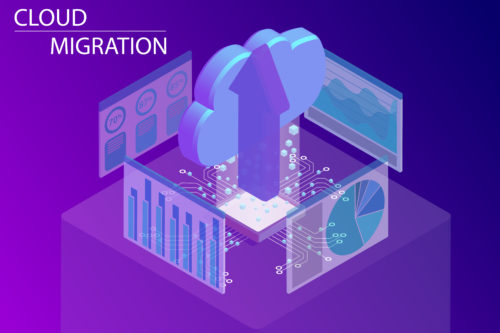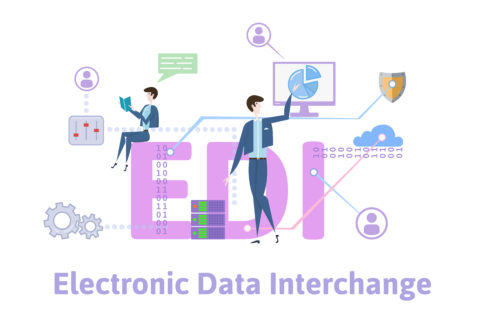Data and analytics are shaping the future to be black and white. The future promises more visibility, eliminating risks and assumptions so businesses can make well-informed decisions. The power of data is being realized with increasing importance in the volatile business scenario of today.
The data stored in your emails, phone records, CRM applications, ERP systems and any of those 35+ business-critical applications you use every day is raw data. It cannot be used in its current form. This is where data experts come into the scene.
What is Data Preparation?
As the name suggests, the data preparation process transforms raw data from multiple sources into a standardized format. This ‘preparation’ makes the data ready for use by business intelligence tools and is thus a prerequisite to analysis.
Importance of Data Preparation
The importance of data preparation can be measured by this simple fact: your analytics are wholly dependent on your data. If you feed junk to the system, the analytics you receive (on which you or the C-Suite bases their decisions) will be garbage as well. The true power of data lies in how it is captured, processed, and turned into true actionable insights.
Data Preparation Steps: How is Data Prepared?
Data Preparation is a scientific process that extracts, cleanses, validates, transforms and enriches data prior to analysis. It is catered to the individual requirements of a business, but the general framework remains the same.
Here are the four major data preparation steps used by data experts everywhere.
Gather Data
Data can be stored just about anywhere – emails, instant messages, spreadsheets, ERP systems, call logs, presentations, CRM tools, bank statements and so on and so forth. The first step to data preparation is identifying which data is important and gathering it all in one place.
This may sound simpler than it really is. Extensive manual coding may be required to bring data from different sources. Unstructured data adds to the complication. Data experts use a bit of reverse engineering here – they identify the outcome first and then try to analyze what bits of data will be required to gather the insight.
Cleanse and Validate Data
Data cleansing and validation imply standardizing the gathered data.
Data from different sources will have different formats focused on presenting specific information. When all of these are brought together, there will be duplication of data attributes and the addition of blank values where subjects are not present in all systems.
This data preparation step aims to eliminate duplicates and errors, remove incorrect or incomplete entries, fill up blank spaces wherever possible, and put it all in a standard format. As per the data protection policies applicable to the business, some data fields will need to be masked and/or removed as well.
Transform and Enrich Data
Data transformation and enrichment pertains to altering the master data to fit the needs of analytics or intelligence tools. This involves linking parts for rich insights, altering formats for data attributes, or any other changes that add value to the outcome.
Start the ETL Process
Now the data is ready to undergo the ETL process. Data preparation steps ensure the bits and pieces of data hidden in isolated systems and unstandardized formats are accounted for. Once fed into the destination system, it can be processed reliably without throwing errors.
The data preparation process captures the real essence of data so that the analysis truly represents the ground realities.
Data Preparation Benefits for ETL
There are several benefits of Data Preparation in line with ETL processes. Some of these are obvious from the steps too. To reiterate, here’s what you can expect by following the data preparation steps mentioned earlier.
Few Errors
Data preparation takes care of the most apparent problems with data, making sure there are few if any hiccups during analysis. Even if data processing does generate an error, these can be tackled quickly because the possible reasons are narrowed down to a handful.
High-Quality Insights
As mentioned earlier, high-quality data translates into reliable insights. Most analytical tools manipulate data to augment the value in it. So if the data is incorrect or full of errors, the same will be multiplied after the analysis. Data preparation ensures the analysis derived from data is true.
Efficient Processing
We’ve already established there will be fewer errors, if at all. Consequently, businesses will be able to process analytics efficiently, even in real-time. In the long run, this means better decision-making and capitalizing on opportunities as they arise.
Self-Service vs Full Service Data Preparation
Now that you know what data preparation is and how it is done, it is important to understand the tools used for preparing data. Broadly speaking, there are two ways to do it:
- Self-Service Data Preparation: Many out-of-the-box data preparation solutions exist in the market. Self-service data preparation tools require extensive coding knowledge to map all data sources. Data collection and cleansing needs to be done manually, which is why self-service data preparation is considered exhausting. On top of this, the reliability of such tools is limited, often stated in fine print as a disclaimer.
- Full Service Data Preparation: Full-service data preparation tools like Astera Centerprise offer end-to-end data integration with in-built transformations, connectors, and automation features. Custom validation rules and verification processes are used to clear out data inconsistencies and highlight possible sources of errors in the data sets. It is essentially code-free, which means non-technical business users can utilize this full service data preparation solution easily. What the end-user gets is pure actionable analysis.
Getting Started with Data Preparation
At this point, you not only understand the importance of data preparation but also know how to do it. There’s no one-size-fits-all situation here. Your business may have different needs in terms of data analytics, which will impact the whole journey.
You don’t have to be a data expert to understand just how the slightest errors can magnify multifold post-analysis. Ideally, seek help from those who eat, sleep, and breathe data – Astera Centerprise, the industry-leading data integration solution.








